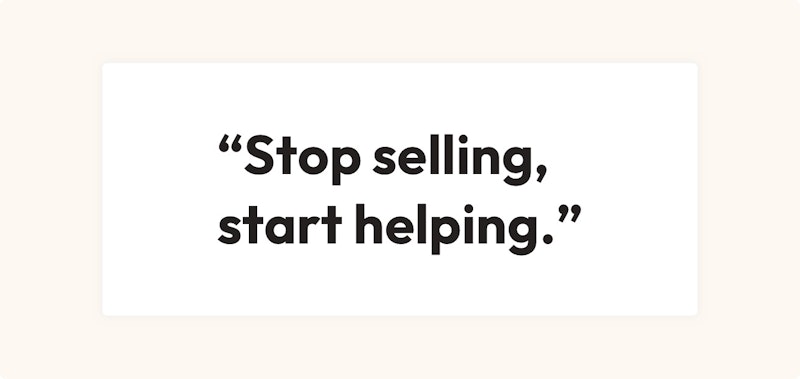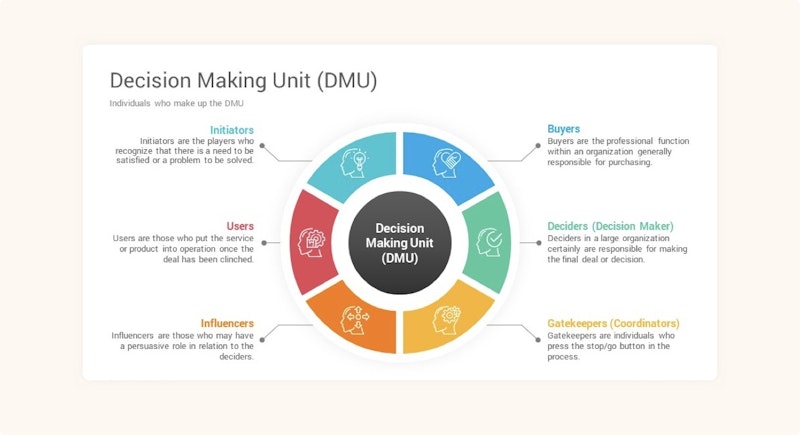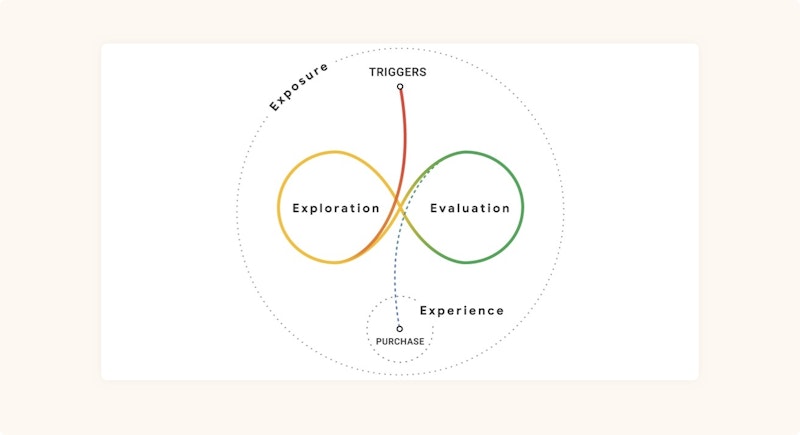All about Online Strategy in 2024
In this guide, Brandfirm breaks down everything you need to know, in uncomplicated terms, about Online Strategy in 2024. With this guide within reach, online strategy is made simple.

After reading this article, you learned:
- four trends leading to growth
- how to put the customer at the center of your digital strategy
- how to map your customer journey
In this article
1. Time to innovate!
The strict division between B2B and B2C is fading. The critical consumer is also an employee of a business and shares similar expectations.
Modern consumers prefer to do their own research, even when it comes to corporate decisions. The old-fashioned ‘grabbing a cup of coffee’ or ‘shaking hands’ at a trade fair to make decisions is gradually disappearing from view.
For many companies, this means a departure from traditional marketing and sales. It's time for innovation!
Companies that are growing fast get this, both B2C and B2B.
They have websites with lots of content and a good user experience (CRO), pay plenty of attention to analyzing data (Google Ads and SEO) and teach their marketing and sales teams to think in terms of delivering value instead of selling ('stop selling, start helping').

Request our free analysis
- Gain insight into opportunities for CRO
- This takes us at least 4 to 6 hours of work
2. 4 Pivotal trends on the road to future growth
So you want to get to work as soon as possible to design a smart digital strategy that aligns with your customer's journey.
To make sure your business stands out in the digital marketplace, we'll first share four pivotal trends that are leading to growth. Then we'll dive deeper into shaping your online strategy.
Trend 1: The marketing team is adaptive and data-driven
The battle for consumers' attention is growing fiercer every year. Brand communications are making their way into our private lives more and more, and our daily lives are influenced by the almost irresistible pull of the tech industry. For example, Netflix is in direct competition with simply hanging out and talking to each other on the couch.
That influx and all-consuming presence also make our attention span shorter and shorter. The judgment of whether something is worthy of attention is at the mercy of a split-second that a message, post, or advertisement flashes by on our screen. And what is trending quickly fades.
Tomorrow's market leaders are feeling the pressure. Consumers are taught by the biggest e-commerce companies that businesses are expected to capitalize on 'what's trending now' while also anticipating 'what's to come'. This is reflected in campaigns, which tap into trends and current events, or in service-oriented questions that are answered in seconds.
Leading marketing organizations give teams the tools and budgets to be data-driven and adaptive. Marketing teams need the freedom to go ‘live’ quickly to test expected outcomes and make adjustments to steer toward success.
The goal is to have the agility to develop new campaigns in days or a few weeks, based on data, that will put the company ‘top-of-mind’ with new and existing customers
Trend 2: Relevance and timing are more important than ever
Getting the attention of the critically minded buyer - in both B2C and B2B markets - requires razor-sharp precision when approaching new customers. Relevance is more important than ever in this regard.
It’s crucial to tailor the digital experience to the individual ('personalization') and the environment ('local'). When sharing knowledge, when offering products and services, and when providing answers to questions. So how, when, and where we offer our products and services.
Marketers should be able to gain in-depth insights into customer needs. After all, consumers are using digital channels in abundance and marketers have more technological tools available than ever before.
Trend 3: A positive financial picture
Today, marketing should have enough data at its disposal to determine the budget, audience, channel mix, and advertising costs needed for a positive return on investment (ROI) on marketing activities.
Marketing teams that actively and consistently focus on this - either themselves or in collaboration with their partner agencies - simply realize more revenue with the same level of investment. The outcome is that marketing budgets can be used more efficiently by up to 20% to attract more new customers or keep existing customers coming back for more.
Trend 4: Norms and values are increasingly influential
Consumers are focusing more than ever on a company's norms and values. For example, sustainability issues such as climate change, renewable energy sources, eating better, circularity, inclusiveness, and fair employment are topics that consumers are increasingly attracted to.
So take a close look at what ideas in terms of sustainability or social goals your company is pursuing. What values was your company built on? Is the company affiliated with initiatives or certified labels? These guiding principles are increasingly important when considering a purchase.
Companies that lead with authenticity, guts, norms, and values - and show this visibly and verifiably in branding and brand identity - are increasingly preferred by consumers (as well as new employees!). It is a requirement for fostering future growth.
Receive our newsletter
- +5,000 entrepreneurs preceded you. We share our knowledge for free.
3. Setting up your online strategy starts with the user
It's pretty obvious: a good online presence and first impressions are important to be considered for any collaboration at all. If, as an organization, you do not put your target audience at the center of your online communication, you are missing the point.
In their search for a solution, end users choose the path with the least resistance. If your product and marketing story is not watertight - for example, because your proposition does not respond to the demand of the target group, or because you find it difficult to clearly explain how your product or service differs from those of your competitors - then that potential customer will leave you with just one click.
How do you prevent that from happening? By giving people a sense of wonder, recognition, and relief at the same time. That aha feeling: "I didn't know I needed this until I came across it and now I have to have it."
If you manage to know what your target group needs almost better than they do themselves, then you have an advantage over other sellers. But don't be mistaken - ultimately your potential customer will decide on their terms.
Of course, you can and should help them get there. You can only do so if you put yourself in the shoes of your target group. This starts with marketing your product or service.
Is the market really in need of your idea?
Developing a new product or service may sound simple: you have a cool idea, develop it into something tangible and make your offer known to 'the market'. But the question is: is the market really in need of your idea? And is it of interest to everyone, or should you focus your story on a specific segment of the market?
If you're going to tell the world about your product or service, the right people have to be listening. Before you market your product or service, you need to ask yourself who will be interested.
The key word here is ‘need’. Do people need your solution? And do they know it; in other words, is there an active buying need? Or is there a latent need (a need the potential customer is not yet aware of) and you need to help them gain that insight first?
To find out what the needs of your target audience are and whether they match what you have to offer, you need to get to know them through and through. And you don't do that by simply asking about their needs, but by looking at the underlying thoughts, behaviors, and motives:
- What does their day look like?
- What responsibilities do they have?
- What tasks and actions are part of that?
- What drives them in their (working) life?
- What do they dislike?
When you’ve answered each of these questions, you also have a better idea of how your product or service can help a potential customer maximize their happiness, or ease their pain. We call this a product-market fit: a perfect fit between what your target audience needs, and what you have to offer.
In other words: do you want to appeal to a broader market, and strike the right chord in each part of that market? Then it’s essential to adapt your message to find a perfect match in every market segment.
With a generic solution that applies to a wide range of industries, you might think you are reaching a larger group, but often your story is so general that no one can identify with it. There is no longer a product-market fit.
Map the key players
Focusing on a specific market segment is an important first step in creating the right product-market fit.
But we love taking things a step further. Because the concept of a market segment is quite abstract. And even if you make it more tangible by picturing a specific customer, the question remains: who am I targeting with my marketing communications? And how can I move these individuals?
This is where we want to look at the Decision Making Unit (DMU) within your target audience.
Who are the people involved in deciding whether or not to buy your product or service? We speak of a unit because, as the product (and thus the customer journey) becomes more complex, the number of people involved increases.
So within a DMU, there are often multiple people involved. It’s good to have a map of the responsibilities and tasks of each of those people. But just as crucial is understanding everyone's role within the decision-making process.
Each of the different stakeholders wears different hats: sort of like a good cop, bad cop dynamic - but just a little more complex.
The key roles are:
- Buyers
- Deciders
- Gatekeepers
- Influencers
- Users
- Initiators
Request our free analysis
- A free analysis worth 4 to 6 hours of work
- 87% of the companies we analyze miss out on sales

The DMU is often used as a framework for the B2B market. But this way of thinking is also good to use for consumers. How often are you influenced by a friend (influencer), do you (decision maker) buy something for someone else (user) or do you tell your partner that a pair of pants does not fit (gatekeeper)?
If you know how each person fits into the game (or at the conference table), you can better determine how to present your proposition to suit that person's role. For example, a user mainly wants to experience how your solution can help them solve their problem, while the final decision maker needs a factual presentation of the pros and cons (cost-benefit analysis).
Buyer persona & buyer journey
If you have a picture of the people included in the buying process, and you know what role they have in decision-making, you can better assess which arguments to present to whom to persuade them.
But if you really want to understand and impact them, you should dig even deeper: beyond the decision of whether or not to use your product or service:
- Who is the individual you’re dealing with?
- What drives your customers?
- What obstacles do they face and what energizes them?
- What keeps them going every day?
- But also: where do they get their information?
By developing a persona, you essentially create a summary of your customer. What do your customers have in common? And how does that affect the way you communicate with them?
The next step is to distinguish the different stages in the persona's buying process. Which steps does the potential customer go through, from the moment they are aware of their need and start looking for a solution, to the moment they are a satisfied customer? And how long does this "customer journey," ideally transforming them into your organization's brand ambassador, take?
To map out the customer journey as accurately as possible take a close look at these steps:
- What questions and needs does the 'persona' have at this stage?
- What steps are they taking?
- How do they feel about them?
- What are their expectations?
- What moments might cause them to drop out and ‘step out’ of their customer journey?
The customer journey is not linear
We are talking about steps and a journey, but the customer journey is not as straightforward as portrayed above. In practice, the persona can step in at any stage, moving crisscross and in circles through the customer journey.
Google recently launched a new model to better illustrate the buying process: the “messy middle” model. So the customer journey looks more like this:

Source: ThinkWithGoogle
The "messy middle" assumes that consumers are continually exposed to new influences ("exposure") during their consideration of a purchase. An online search begins with certain needs (“triggers”). The choice of channels where someone searches for new information (search engines, social media, comparison websites, online videos, etc.) and the choice of keywords leads to a flood of information.
Every piece of information during the search (“exploration”) must be assessed for relevance, evaluated for usefulness, and rejected or included in the person’s consideration (“evaluation”) to decide to buy (“purchase”).
The exploration and evaluation stages are tangled - the “messy middle” according to Google. Because: a new piece of information can trigger the realization that the search needs to be refined. And therefore start all over again.
Eventually, a person will feel informed enough to make a purchase. The company that, at the right moment, can pour the right information into an excellent digital experience ("experience"), will be able to bring in the purchase, request for quotation, or other buying signals.
So why is a customer journey useful, if it is not a journey with a clearly defined start and end point? Because it’s important to be aware of the possible steps a potential customer will take. It's up to you as a company to be visible for each step. So that every potential customer, no matter how complicated and chaotic their customer journey, and no matter where they are in that messy middle, will encounter your business.
4. Conclusion
In short, once you know which market segment you want to focus on, you are going to scrutinize and comb over it until you have a proper understanding of what’s going on in the minds of the DMU.
By including the most important people in the DMU in a ‘buyer persona’ and corresponding ‘buyer journey,’ you’ll be able to connect with your target audience. Human to human.
Need help from a digital agency? Do not hesitate to contact us or request our free analysis.
Request our free analysis.
- A free analysis worth 4 to 6 hours of work
- Clear custom-made strategy
- 87% of the companies we analyze miss out on sales

